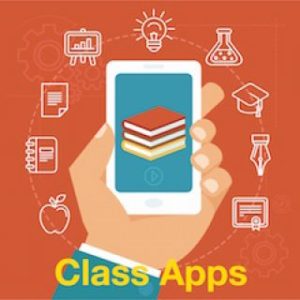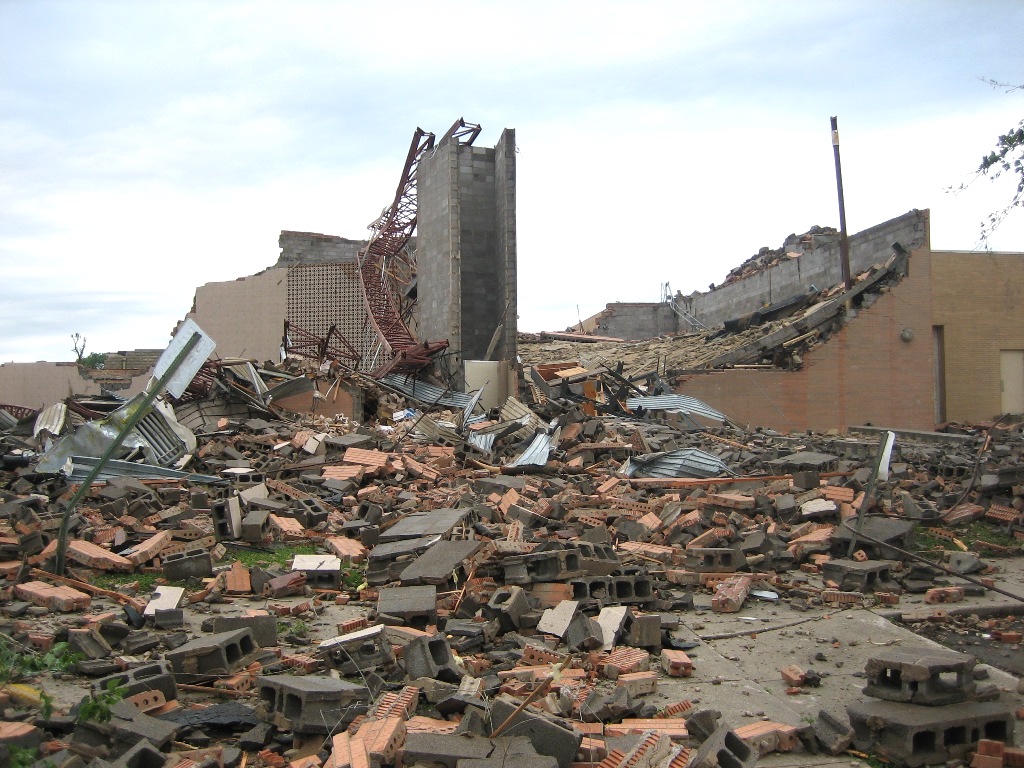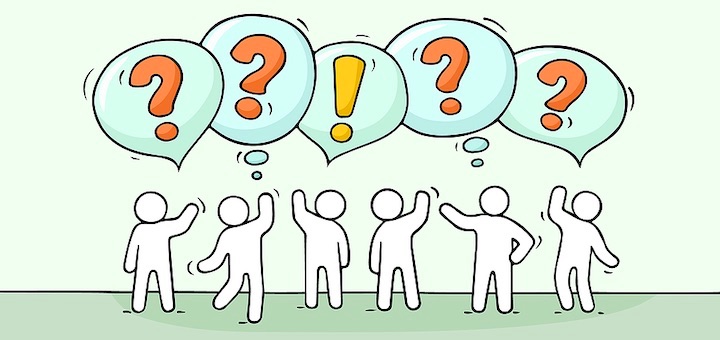Let’s Ask Students How We Can Teach Better
A MiddleWeb Blog

I thought of a trip I took years ago to the small, midwestern town of Chapman, Kansas. It’s unlikely that most people remember – or have even heard of – the massive tornado that tore through Chapman in June 2008.
Though severe weather is common in that region of Kansas, this particular monster twister took an eerie path that somehow damaged every single school in the small city. Yet, despite the ruin caused by the tornado, the town immediately went to work to ensure that every classroom was open for business for the scheduled start of the school year just 2 months later.

When I visited with Chapman’s teachers and administrators, I found them asking the same question that I now often ask myself in a time of widespread educational uncertainty…
How can student learning continue in the wake of so much disruption and upheaval?
Notice that the question isn’t a matter of IF teaching and learning will carry on, but rather…HOW.
The challenges faced by teachers and students over the past several months have come with an ever-so-slight “silver lining.” COVID has coerced every educator to reassess the effectiveness, efficiency, and essentiality of everything we used to do in the classroom.
It’s Time to Start Asking Students What They Really Need
Too often we assume that, since we are professional educators, we already know what it is that our learners need. Yet when teachers are willing to pause, gather feedback from students, ask for suggestions, and make adjustments to instruction and curriculum, remarkable changes take place.
First, we are better able to discern (and meet) the needs of our students. Second, we encourage learners to step back and think about themselves – to engage in “metacognition and self-regulation” (Tan, Whipp, Gagné, & Van Quaquebeke, 2019). Third, we communicate to students that we view and value them as capable, independent learners (Mulliner & Tucker, 2017).
In the middle of March, I was informed that – due to safety concerns – my university teacher ed classes would be taught remotely for the remainder of the school year. Immediately I started worrying about how my students could possibly learn without face-to-face instruction and interaction, frequent structured discussions with their peers, and of course…my witty classroom stories and insights.
The Truth Hurts, But Helps
Coincidentally, a couple of weeks before we all went home, I had administered a brief class survey (one I give regularly throughout the semester) in an effort to gather a bit of student feedback about:
✻ which components of class they considered to be the most (and least) helpful to their learning,
✻ any elements of instruction they feel they need more or less of, and
✻ what suggestions they have for me that would help them be more successful.
Our class has taken to calling this the ‘I Need More or Less of This Survey.’
To my chagrin, what they valued the LEAST – and wanted MUCH LESS of – was what I secretly enjoy the most: teacher-talk time, video clips, stories, and content slides.
When I administered the same survey a few weeks after we started remote learning, the results became even clearer. Almost without fail, students indicated that they valued and wanted MUCH MORE of the following:
- Teacher modeling of how to complete challenging learning tasks
- Knowledge about the expectations/evaluation criteria for assignments
- Specific and timely feedback
- Chances to improve/revise their work
- Opportunities to ask questions and receive clarification from me outside of class
The last question on the survey was open-ended and asked for student suggestions about what I could do better or just differently as a teacher. Some of the most frequently mentioned student recommendations included:
- Clearer instructions and evaluation criteria
- Easier access to instructional materials and resources
- Short, on-demand videos for students to watch/review of the examples and explanations provided in class
High-Tech and No-Tech Tools for Gathering Student Feedback
Any time spent by a teacher gathering feedback FROM students is time well spent. Educators seeking to improve learning by pinpointing specific student needs with quick surveys administered via technology should explore Google Forms, YoTeach, Poll Everywhere, and AnswerGarden. Each tool allows for quick polling and surveying with a variety of ways to view and export the results.
Those of us seeking a simpler, tech-free approach can simply ask students to reflect on the last week or weeks of class and respond to three simple questions:
- What has the teacher done or provided recently that has HELPED YOU THE MOST in being successful?
- What has the teacher done or provided recently THAT HAS MADE IT DIFFICULT for you to learn?
- What ONE SUGGESTION DO YOU HAVE FOR YOUR TEACHER that would help you be more successful?
Regardless of the polling format we choose, the goal is to design questions that allow us to gather data and suggestions that paint a real picture of the effectiveness of teaching and learning. Equally important is the need for our students to respond accurately and honestly…without fear that their feedback and suggestions will negatively impact their grade or standing with their teacher or their classmates.
Lots of Questions
Collecting feedback from my students about how I need to improve has always been eye-opening and sobering. Like many educators, I often overestimate the clarity and effectiveness of my teaching and curriculum.
This is unfortunate since the judgment calls we make as teachers (whether accurate or inaccurate) have a tremendous impact on our instructional decision-making – our design of learning activities, instructional pace, and the level of support we provide (Meissel, Meyer, Yao, & Rubie-Davies, 2017).
Though it is generally painful to hear the truth from my class about what is and is not working, their feedback and suggestions – especially since the chaos of COVID – are proving invaluable as I begin to plan for the upcoming school year (not knowing what the format of instruction will be).
My brain is bursting with questions like…
- Will my students and I finally be in a class together again…or will teaching and learning take place via technology/remote-learning?
- Will some of the school year be in one format and then change to another?
- How do I develop and support learning experiences that will take place in face-to-face or online teaching formats – or both?
- What are the best ways to support students who have limited or no access to reliable technology?
- What new skills do I need to develop so I can help and connect with students that I might not see for weeks (or even months) at a time due to another COVID crisis?
- How can I help students stay connected to learning and each other if we aren’t able to meet face-to-face?
- How do I stay informed about and flexible toward the diverse needs of different students?
As we search for answers to these questions, we would be wise to look closely at the last several months of ‘duct tape’ teaching. Whether by choice or out of necessity, every one of us now finds ourselves reviewing, reevaluating, and hopefully revamping our approach to instruction.
In the wake of uncertainty and disruption, we must move forward by asking ourselves and our students to uncover the sometimes painful truth about what works in teaching, what doesn’t, and what our students really need from us.
References
Meissel, K., Meyer, F., Yao, E. S., & Rubie-Davies, C. M. (2017). Subjectivity of teacher judgments: Exploring student characteristics that influence teacher judgments of student ability. Teaching and Teacher Education, 65, 48-60.
Mulliner, E., & Tucker, M. (2017). Feedback on feedback practice: perceptions of students and academics. Assessment & Evaluation in Higher Education, 42(2), 266-288.
Tan, F. D., Whipp, P. R., Gagné, M., & Van Quaquebeke, N. (2019). Students’ perception of teachers’ two-way feedback interactions that impact learning. Social Psychology of Education, 22(1), 169-187.
Curtis Chandler is an education professor at BYU-Idaho and was the 2011 Kansas State Teacher of the Year.
































